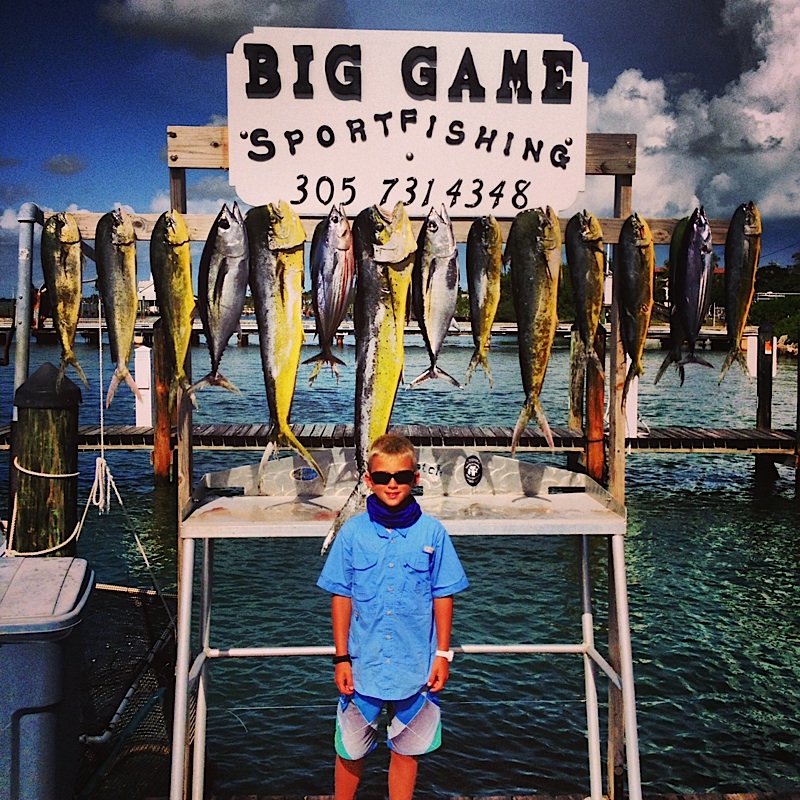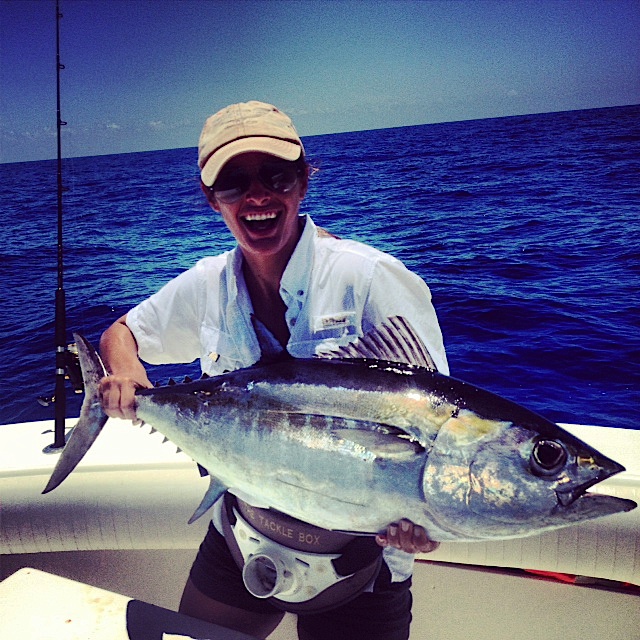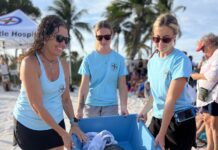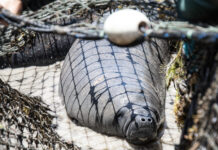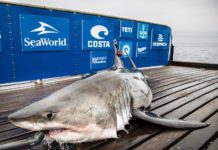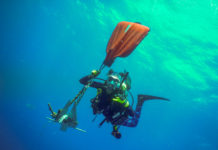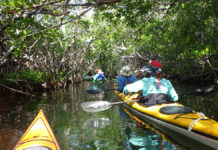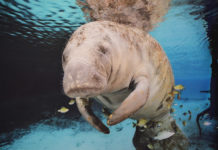As last week was mini lobster season, most of The Weekly readers probably spent their time in the water as opposed to on top of it. Hopefully, they caught your share of bugs, and had a safe and fun time on the water. Although mini season is over, lobster season will re-open at 12:01 am on Tuesday, August 6 and continue until midnight on the last day of March. Keys residents and visitors will have plenty of time to catch those lobsters that were missed during mini season.
As far as fishing goes, conditions have remained stable and that’s a good thing. On the reef, it has been exceptional for snapper fishing. We’ve had great catches of yellowtails, muttons, and mangroves.
For yellowtail snappers, the fish have been at depths between 50 and 100 feet of water. I usually chum heavily to get these fish up off the bottom. The water on the reef has been clear lately, so definitely go light with your leader. For yellowtail snappers, I’ve been using fluorocarbon between 12 to 14 pounds. Shrimp or glass minnows seem to be their bait of choice lately.
The mangrove snappers have been everywhere! They have been on the shallow patch reefs in 20 to 30 feet of water as well as the deeper reefs in 40 to 80 feet of water. The mangrove bite has been hot, especially in the early morning hours. These fish are much more aggressive than yellowtail snappers, so you can use heavier leaders. I’ve been using 20- to 30-pound fluorocarbon. If the bite starts to slow down, there are a few things you can do to get the fish biting again. First, I would recommend lightening up on your leader. If that doesn’t work, I try to fish fewer lines. Sometimes having too many lines in the water can spook the fish, so try fishing one or two lines only to turn the bite back on. When the mangroves are up on the surface feeding on the chum, I use a smaller jig head with some cut ballyhoo. To catch a bigger mangrove, use a heavier jig head with a pinfish or live ballyhoo.
For mutton snappers, fish the deep wrecks between 100 and 200 feet. On the wrecks, I drop a live ballyhoo, threadfin, or pinfish, with a long stretch of fluorocarbon leader. On the reef, freeline fresh cut chunks of bait to target the muttons swimming up in the chum slick, or drop a live bait down to the bottom fished on a jig head. There have been a lot of mutton snappers on the edge of the reef, mixed in with the yellowtail and mangroves. If you notice some muttons hanging around in your chumslick, I would upgrade your leader to at least 30- or 40-pound fluorocarbon.
Offshore, the Marathon Hump has had a lot of action with captains reporting great catches of blackfin tuna and skipjacks. When you get to the Hump, be prepared to troll, live bait, and to use butterfly jigs. I actually try to avoid the Hump during the weekends or flat calm days since it is often packed with boats. Fishing is typically better at this spot when there are fewer boats around.
Dolphin fishing during the last few weeks of July was consistent. There have been plenty of schoolie dolphin around with a couple slammers in the mix. There has been plenty of debris and scattered grass offshore which has been holding bait beneath it. Since there is such a plethora of baitfish around right now, the dolphin have been a little picky about what they eat. On the way out offshore, I’ll stop and sabiki (using a rig of many, small lures) some of the live bait underneath the grass, and use that to entice the dolphin.
While Florida Keys bridge fishing is most popular during the winter months and during tarpon season, they can also be quite productive during the summer months. You can catch a variety of fish at the bridge, such as, snappers, groupers, jacks, sharks, permits and tarpon. My favorite bridge to fish is the Seven-Mile Bridge, but here can be plenty of action at Long Key, the Tom’s Harbor Bridges, Bahia Honda, and even Vaca Cut.
For fishing the bridges I use the same baits as I would use in Florida Bay, only I start out with a heavier leader to try and get those bigger fish out of the current and to keep them from breaking me off on the pilings.
